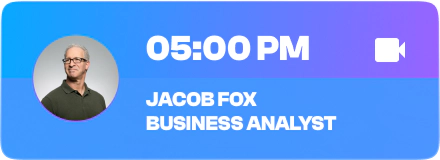When it comes to email marketing, one size doesn’t fit all. Effective practices of communication in a B2B environment won’t necessarily work that well in the B2C sphere. This article will tell you all you need to know about the specifics of each one in a concise, comprehensible manner. We will start out with some common sense, and obvious pointers, but may actually end up leaking a few top-secret, maximum security level tips and tricks, so pay attention.
B2B
B2B emails are primarily viewed during work hours. (Duh). One of the first things people do when they come to work is open their work emails. It’s a great way to start the day off without putting in much effort. Therefore, any work emails sent during non-working time are significantly more likely to be read in the morning than at lunchtime or in the evening. This narrows the scope of the sending time and makes it easier to run a variety of outreach tests for your upcoming email campaigns.
Decision-making takes time. Especially true for bigger companies. In fact, the more chain of command and hierarchies present, the longer it will take for a decision to be approved. If you sent an offer out via email, and the reply is taking a while, it’s safe to assume either there is no interest whatsoever, or your offer is on hold and being compared to your competitors. So, put in a little effort to remind them about yourself, and update that email thread with a follow-up. Sending 2 emails without an answer doesn’t mean you should abandon the pursuit. More than 4, however, and you should take the hint.
Fun Fact #1 – In 1976, Queen Elizabeth II was the first head of state to send an email. This was done over the Internet’s predecessor – Arpanet.
The custom spam filters on your recipients’ servers can be configured in the most unexpected ways. An email that has been validated numerous times over can end up in the spam section of a company where it is most needed in the inbox. Therefore, be sure to manually check if key recipients have received your email. Ask for confirmations, reach out via LinkedIn, or even contact other company members to make sure.
The multitude of replies and forwards of an email can break the original layout that was sent. When the decision-making process involves several people in the chain of command, all that back and forth is likely to disrupt the initial email structure and presentation. The solution – keep it as simple as possible and stick to text, so that you exclude the risk of possible malfunctions.
B2C
The client comes first. Personalize as much as possible. Use as much of the data you’ve gathered as possible. This includes where they live, their gender and age, their interests, purchase history, and even browsing history. Find out your customers’ preferences by collecting data, and using it to segment your mailings. Relevant content is key to effective email outreach in the B2C segment. Even better – try to go beyond personalization. Give your subscribers a sense of control. Let them control their subscriptions and choose what content they want to receive and when.
Fun Fact #2 – On average, in 2021, 306 billion emails were sent and received each day.
Adapt for all platforms. While B2B emails are better made simple, due to the aforementioned reply/forward point, B2C emails can be as crazy and ambitious as you want them to be. Apparently, almost half of all emails are read on phones, so you better be optimizing them. Responsive email design is mandatory here. Unless you want to make a horrible first impression. We actually have a separate article dedicated to this topic.
Be short & impactful. Remember that customers predominantly act on emotion and prefer simple, to-the-point communication.
To make your B2C emails simpler, more emotional, and more effective:
- Choose strong, energetic email subjects, and don’t hesitate to use emojis;
- Use storytelling;
- Keep a positive, friendly tone;
- Use vibrant pictures to show the product/service in action;
- Use psychological sales techniques like creating urgency, scarcity, and adding social proof/validation.
Conclusion
To summarize, most of the B2B email marketing methodology consists of logical, process-driven approaches. B2C, on the other hand, concentrates on emotionally driven purchases. The rules aren’t that rigid, and there are more than a few overlaps between the two, but at the end of the day, there is an art to messaging potential and existing clients, and by checking our blog for periodic updates, you will know everything there is to be the best in the game.




